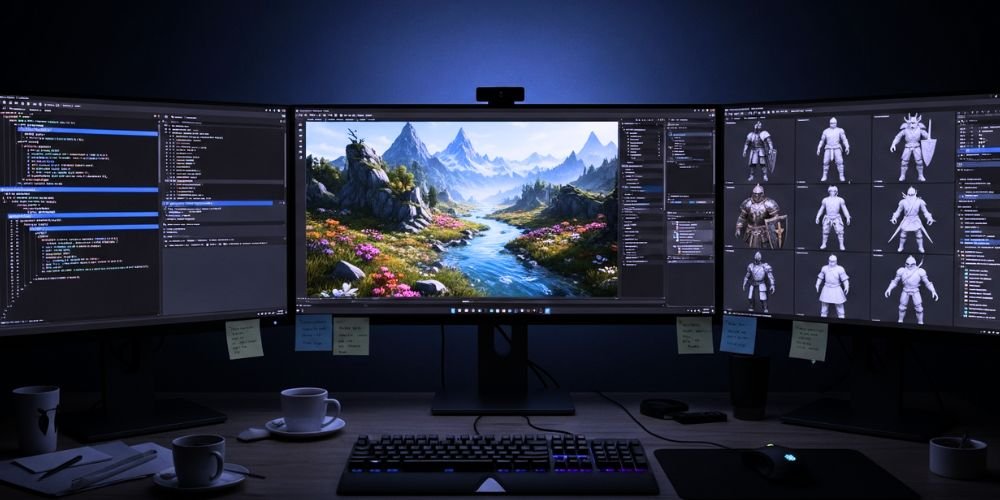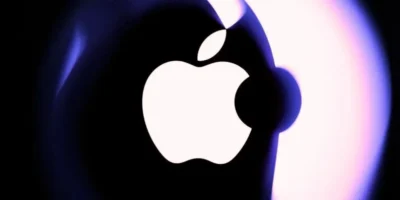The world of game development has never been more vibrant or accessible. From hyper-realistic AAA blockbusters to groundbreaking indie darlings, the tools used to build these interactive worlds are more powerful than ever. At the heart of every game lies its engine—the foundational software that handles everything from rendering graphics and physics to sound and scripting.
Choosing the right game engine is the most critical decision a developer makes, defining the scope, visual style, and ultimate potential of their project. As we look at the landscape in 2025, the market is dominated by a few key players, each with unique strengths. This guide will break down the top 5 game engines that are powering the future of interactive entertainment.
Unreal Engine 5 (UE5)
Developed by Epic Games, Unreal Engine 5 is the undisputed king of high-fidelity, photorealistic graphics. It is the powerhouse behind some of the most visually stunning games on the market and has become the go-to choice for AAA studios and filmmakers alike.
If your goal is to push the boundaries of visual quality and create a breathtaking, next-generation experience, UE5 is in a class of its own.
- Lumen and Nanite: These two revolutionary technologies provide dynamic global illumination and virtualized micropolygon geometry, allowing developers to create incredibly detailed and realistic worlds without the traditional performance trade-offs.
- Blueprint Visual Scripting: A powerful node-based system that allows designers and artists to create complex game logic and interactions without writing a single line of code, perfect for rapid prototyping.
- World-Class Toolset: Comes with a comprehensive suite of tools for every aspect of development, from the MetaHuman Creator for realistic characters to powerful world-building and animation tools.
- Strong C++ Foundation: For programmers, it offers a robust C++ backbone that provides deep control over every aspect of the engine.
Best For: AAA game development, hyper-realistic graphics, architectural visualization, and virtual film production.
Unity
Unity has long been the champion of indie developers, mobile game creators, and cross-platform development. It strikes an exceptional balance between power, accessibility, and versatility, supporting more platforms than any other engine.
While it has faced some community challenges, its massive asset store, strong C# scripting, and proven track record keep it an essential tool for millions of developers.
- Unmatched Cross-Platform Support: Build your game once and deploy it with ease to over 20 platforms, including PC, all major consoles, mobile (iOS and Android), and AR/VR devices.
- The Unity Asset Store: A massive marketplace filled with pre-made 3D models, tools, scripts, and extensions that can dramatically accelerate development time.
- Strong C# Scripting Environment: C# is a powerful, modern, and relatively easy-to-learn programming language, making it a great entry point for new programmers.
- Excellent for 2D and 3D: While known for 3D, Unity also has a dedicated and robust suite of tools for creating high-quality 2D games.
Best For: Indie games, mobile games, AR/VR development, and any project that requires a broad cross-platform reach.
Godot Engine
Godot is the rising star of the game engine world and the champion of the open-source movement. It is a completely free, lightweight, and community-driven engine that has gained immense popularity for its user-friendly design and transparent, developer-first philosophy.
For indie developers who value freedom, a fast workflow, and a tool that gets out of their way, Godot is an increasingly popular and powerful choice.
- Truly Free and Open Source: Godot is published under the permissive MIT license. There are no fees, no royalties, and no strings attached. The engine is yours to use and modify as you see fit.
- Intuitive Scene and Node System: Its unique architecture, where everything is a “scene,” makes organizing and reusing game elements incredibly intuitive and efficient.
- Excellent 2D Workflow: Widely considered to have one of the best and most streamlined workflows for creating 2D games on the market.
- Lightweight and Fast: The engine itself is a tiny download and is known for being incredibly fast and responsive, perfect for developers on less powerful hardware.
Best For: 2D games, indie developers, hobbyists, and anyone who wants a completely free, open-source engine without corporate oversight.
CryEngine
CryEngine has a long and storied history of producing games with stunning visual fidelity, particularly in outdoor environments. Originally developed by Crytek for the Far Cry and Crysis series, it has always been synonymous with cutting-edge graphics.
While it has a steeper learning curve, for teams looking to create visually spectacular first-person games, CryEngine remains a formidable contender.
- Breathtaking Visuals: Renowned for its best-in-class rendering of natural environments, including realistic vegetation, water, and dynamic lighting systems.
- “What You See Is What You Play” (WYSIWYP): Features a powerful real-time editor that allows you to instantly jump into your game to test changes, speeding up the iteration process.
- Full C++ Source Code: Provides experienced developers with the full C++ source code, offering deep customization and control over the engine’s core functionality.
- Royalty-Based Model: Offers a royalty-free model up to a certain revenue threshold, making it accessible for smaller projects to get started.
Best For: First-person shooters (FPS), games set in large, realistic outdoor environments, and teams with strong C++ programming skills.
GameMaker
GameMaker has carved out a powerful niche as one of the best and most accessible engines for creating 2D games. It has a legacy of powering some of the most successful indie games of all time, like Undertale, Hotline Miami, and Hyper Light Drifter.
Its focus on simplicity and a fast workflow makes it the perfect choice for solo developers, beginners, and anyone focused on 2D game creation.
- 2D Focus and Optimization: The entire toolset is designed from the ground up to make 2D game development as fast and easy as possible.
- Drag-and-Drop and GML: Offers both a visual “Drag and Drop” system for beginners and a simple, C-like “GameMaker Language” (GML) for more advanced control.
- Rapid Prototyping: The streamlined workflow allows you to go from an idea to a playable prototype in an incredibly short amount of time.
- Strong Cross-Platform Export: Easily export your 2D game to a wide variety of platforms, including PC, console, and mobile.
Best For: 2D games, solo developers, beginners, and rapid prototyping for game jams.
Conclusion
The game engine you choose is the foundation upon which your creative vision will be built. In 2025, the options are more powerful than ever. For breathtaking realism, Unreal Engine is the undisputed king. For unparalleled versatility, Unity remains a dominant force. For open-source freedom, Godot is the community’s champion. For stunning natural worlds, CryEngine is a visual powerhouse. And for streamlined 2D creation, GameMaker is a master of its craft.
By understanding the strengths of each engine, you can select the right toolkit to bring your interactive dreams to life.













